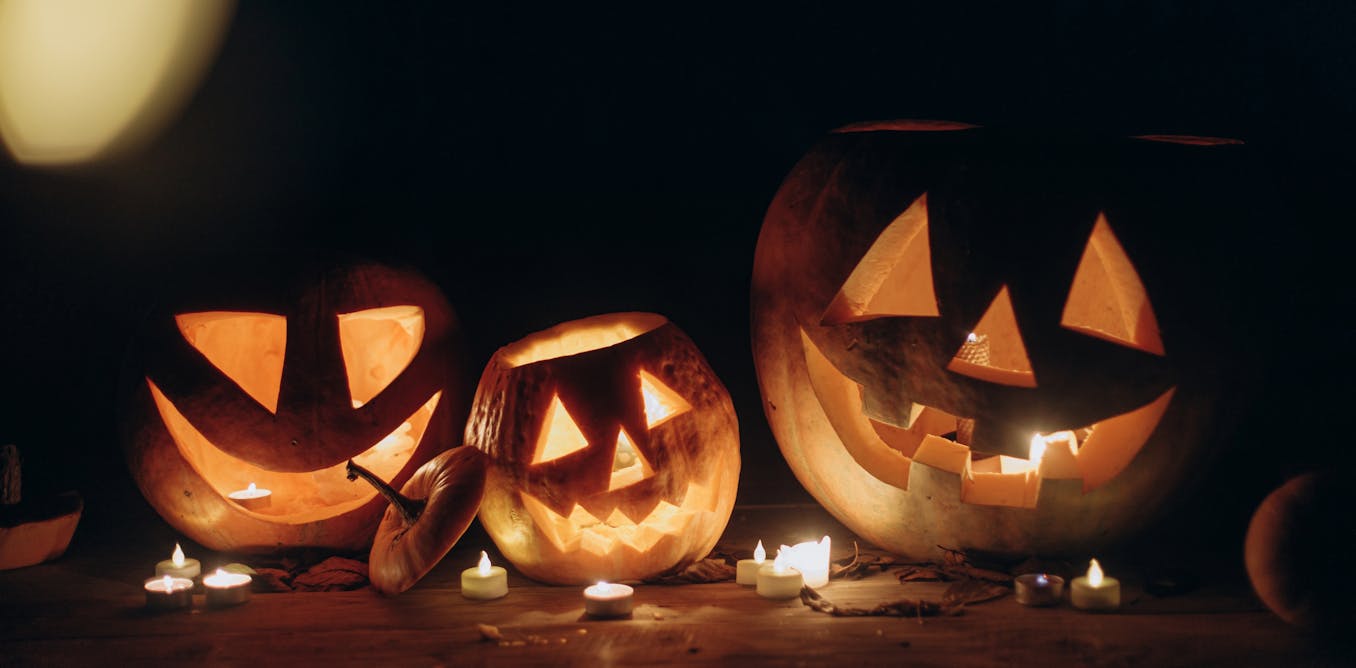The greatest symbol of Halloween is, beyond a doubt, the jack-o’-lantern: a pumpkin with its innards scooped out, a grotesque, smiling face carved into it, and a candle inside. Its flickering light casts ghostly shadows and brings the carved face to life, enhancing the holiday’s distinctive air of mystery and festivity.
The type of pumpkin most commonly used for Halloween is Cucurbita pepo, typically the Connecticut field or Jack O’Lantern varieties, whose colour, rounded shape and tough rind make them ideal for carving. But pumpkins were not always used for this tradition. In the beginning, other vegetables were carved. Specifically, turnips.
The spirit of Stingy Jack
The most famous legend associated with the tradition of carved Halloween vegetables takes us back to 18th-century Ireland. It is linked to the Irish folklore figure of Stingy Jack, also known as Jack the Smith, Drunk Jack, Flaky Jack and Jack O’Lantern.
Jack fooled the devil twice, so the story goes. First, he convinced him to turn himself into a coin to pay for one last drink before taking him to hell, and then he trapped him in the top of a tree. To gain his freedom, the devil had to promise Jack that he would never try to claim his soul again.
However, when Jack died, his sinful life prevented him from entering heaven. The devil honoured their deal and denied him entry to the underworld, leaving Jack condemned to wander the Earth in eternal darkness, unable to rest in either heaven or hell.
Satan mockingly threw him a burning ember from hell to light his way, and Jack placed the ember inside a hollow turnip, which he used as a lantern. And so he became Jack O’Lantern, Jack of the lantern.
Samhain, the Celtic origin of Halloween
Halloween’s ancient roots are linked, for the most part, to the festival of Samhain, which marked the end of harvest season and the Celtic new year. In the 18th century, many people in Ireland celebrated Samhain with a ritual of going from house to house in search of food and drink – this is where we get modern day trick or treating.
Since darkness prevailed over preindustrial Ireland in autumn, many would carve turnips, potatoes and other root vegetables, and fill them with coal or candles to create improvised street lamps to guide people celebrating Samhain. Sometimes, they would carve faces into them.
There was also an old belief that, on Halloween night, the boundary between the worlds of the living and the dead was at its weakest, allowing both good and evil spirits to come back. Vegetable lamps were put in windows and doorways to ward off these wandering spirits, including that of Jack O’Lantern himself. Over time, people began to carve frightening faces into turnips to frighten evil spirits away.
Read more:
Samhain: the true, non-American origins of Halloween
How a microorganism changed turnips for pumpkins
The Great Irish Famine, also known as the “Potato Famine” and the “Great Hunger”, was a devastating period of starvation, disease and migration that affected Ireland from 1845 to 1849, though its effects were still being felt as late as 1852.
Although the exact figures are unknown, records indicate that there were at least 1,100,000 deaths, and mass emigration of another million people. The result was a population decline of almost 30%. The famine was a disaster on many fronts – it was a convergence of political, religious, economic and, above all, microbiological factors.
The famine was caused by the oomycete Phytophthora infestans, commonly known as late blight, which destroyed potato crops, the staple food for much of Ireland’s poor. This microorganism is very aggressive, and is still a threat to important crops such as potatoes and tomatoes.
Unfortunately for the Irish, Phytophthora infestans took hold in the soil. The following years were catastrophic, as the pathogen persisted and potato crops were either ruined or disappeared altogether. At that time, there were no chemical or genetic methods to combat blight. Famine and its associated diseases ravaged the poorest, while malnutrition facilitated the spread of serious illnesses like typhoid fever, tuberculosis, diphtheria and cholera.
Read more:
How to tackle new strains of potato blight and avoid another great famine
Bringing Halloween to the US
Those who were lucky managed to emigrate in search of new opportunities, although many did so in appalling conditions and perished during the journey. The largest Irish diaspora settled in the United States, a predominantly Protestant country. However, more than 90% of Irish migrants were Catholic, and this had a significant impact on American society.
Irish immigrants brought many traditions with them when they crossed the Atlantic, but when it came time to celebrate Halloween, they hit a snag: turnips were not easy to find in America. Fortunately, they found a native vegetable that was much larger, more striking, abundant in autumn, and easy to hollow out and carve: the pumpkin. It immediately replaced turnips and other vegetables.
Read more:
Pumpkins’ journey from ancient food staple to spicy fall obsession spans thousands of years
Pumpkins carved with spooky faces quickly became integral to Halloween celebrations. Although they were initially used to scare away Jack’s spirit and other wandering souls, over time, the jack-o’-lantern evolved into a simple festive symbol. Today, they adorn homes, mixing fright and fun throughout the month of October.
The dangers of decaying pumpkins
Even today, pumpkins can harbour danger. A 2006 study analysed the rapid fungal decomposition of Halloween pumpkins (Cucurbita pepo) in Northern Ireland during October 2005.
It found that, after being carved and displayed for some time, jack-o’-lanterns developed significant microbial deterioration. The study revealed the presence of at least five types of fungi (Penicillium, Gibberella, Mucor, Nectria and Fusarium), three of which are known to cause infections in immunocompromised individuals. This risk had not been previously documented.
This is not to say carved pumpkins should cease to be part of Halloween festivities, but in healthcare settings with vulnerable patients, they should be regularly inspected to minimise the spread of spores. At the first sign of fungal contamination, they should be discarded at once.
A weekly e-mail in English featuring expertise from scholars and researchers. It provides an introduction to the diversity of research coming out of the continent and considers some of the key issues facing European countries. Get the newsletter!



